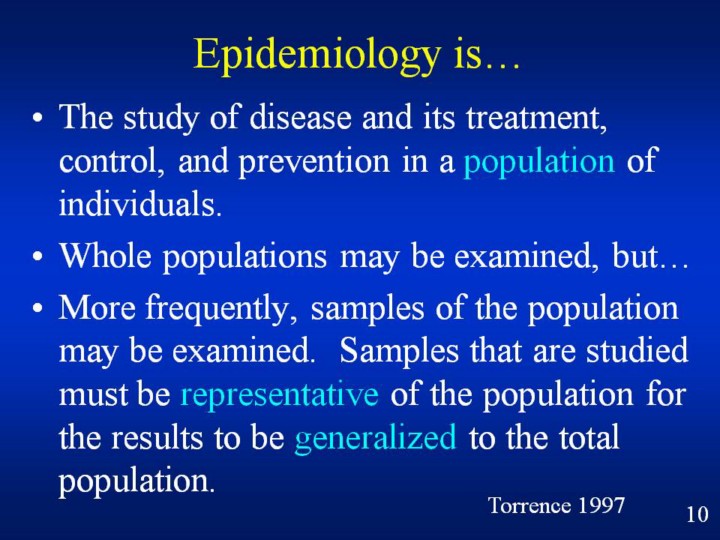| front |1 |2 |3 |4 |5 |6 |7 |8 |9 |10 |11 |12 |13 |14 |15 |16 |17 |18 |19 |20 |21 |22 |23 |24 |25 |26 |27 |28 |29 |30 |31 |32 |33 |34 |35 |36 |37 |38 |39 |40 |review |
 |
Epidemiology is distinguished by its focus on the study of disease in populations (large groups) or communities. It is often impossible to study every single person in the population, so epidemiologists will assess the importance of disease by focusing on samples of the population. These samples must be representative (or reflect the characteristics of the overall population) for the results of any work to be valid. If the samples are representative, then one can say that is it possible to generalize the results of the epidemiology study from the sample to the total population.
An important issue here is understanding the difference between populations and population samples. Almost all epidemiology work is done on samples, and then the results are assumed to apply to the whole population. This assumption can only be true if the sample represents the characteristics of the total population to a good degree. |